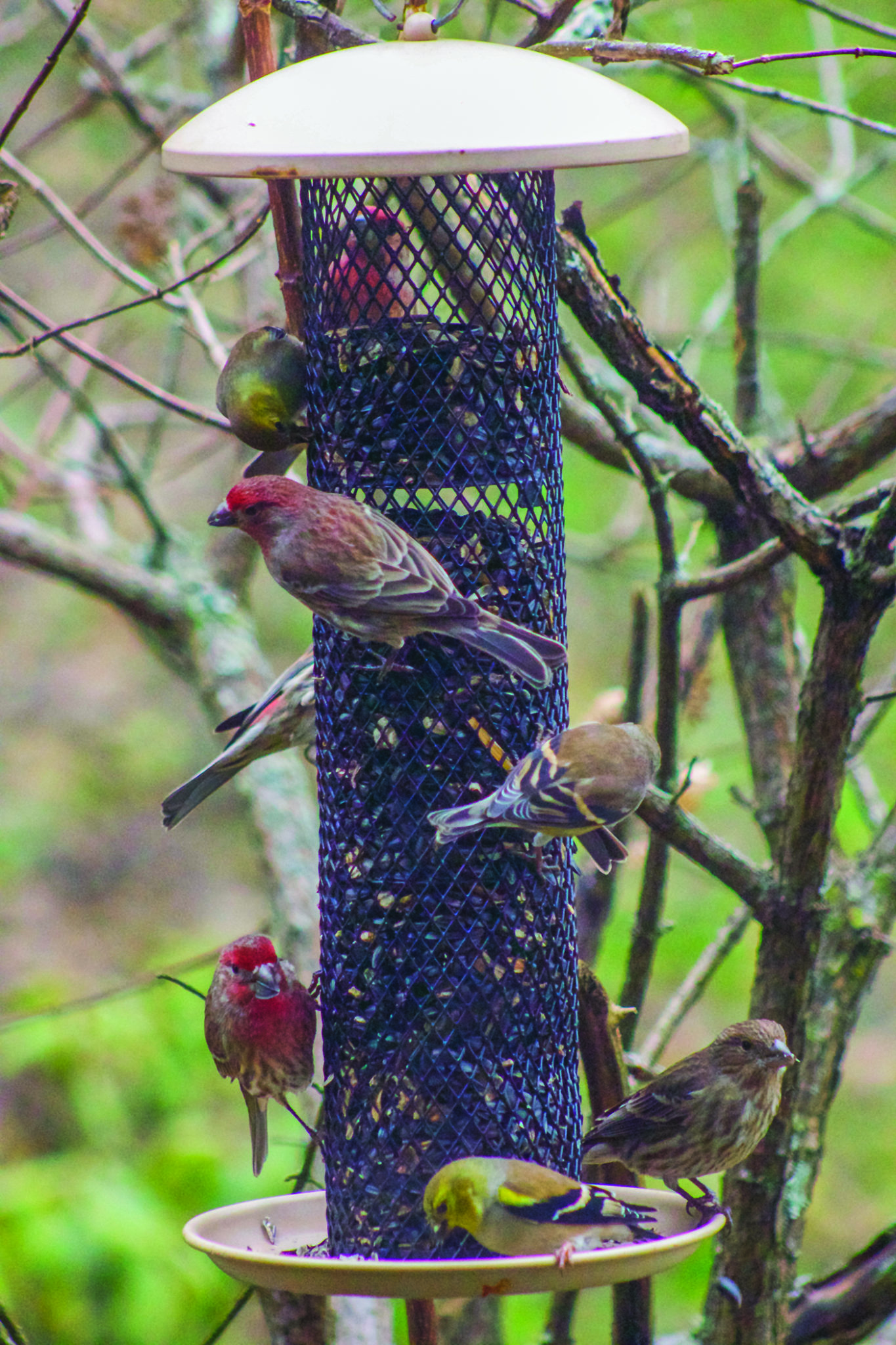Hungry Birds

Unlike neotropical migrant songbirds that fly thousands of miles to Central and South America to overwinter, many songbird species live year-round in Kentucky. They’ve got adaptations to help them stay warm. For example, their body temperature averages about 105 degrees, and many species grow extra feathers for winter. Even a bird’s seemingly bare legs and feet are covered with specialized scales that reduce heat loss.
All this armor is good, but hard winters can make it difficult for them to find food and survive. Providing food for birds in winter will make their lives a little easier—and they’ll give back, too, by giving us the therapeutic benefits of watching them. Seeing a bright red male cardinal “going to town” on black oil sunflower seed is a colorful reprieve from the gray of winter all around him.
Black oil sunflower seed is loved by just about any bird species visiting your feeder. It’s one of only two types of feed I use. The other is suet, which comes in the form of a fatty cake mixed with grains, seeds, fruits, and nuts. Suet attracts species such as red-headed and red-bellied woodpeckers.
But there are many other bird food choices if you want to add a little variety to the buffet. De-shelled, unsalted, roasted peanut bits provide protein and energy. Cracked corn is another good choice. You can even give them mealworms, alive or dried; they’ll be devoured in no time. The bird feeding section of your nature shop, grocery store, or big-box retailer has all sorts of bird feed for sale, along with packaging information on what species each attracts. You can go all out or keep it simple.
If you’re just getting into backyard bird feeding, don’t be disappointed if birds don’t come immediately to your feeder. It usually takes them a week or so to find it. Once a couple of birds start feasting on the goodies, others will notice and come to see what all the commotion is about. Before you know it, you’ll have so many of them that a bird identification field guide will come in handy. I like to put out two feeders to help break up the crowd—and I buy plastic or metal feeders because they’re easier to clean than porous wooden ones.
Backyard bird feeding won’t dramatically increase the worldwide population of songbirds, but it will increase the population around your house and keep you going back and forth to the window, mesmerized by wild creatures so close at hand.
INSIDER TIPS
For more information on bird feeding, stop by your local nature shop or a Wild Birds Unlimited store; visit www.wbu.com to find locations near you.
Keep a bird identification book handy, such as The National Audubon Society Field Guide to North American Birds or Peterson Field Guide to Birds for your region.

